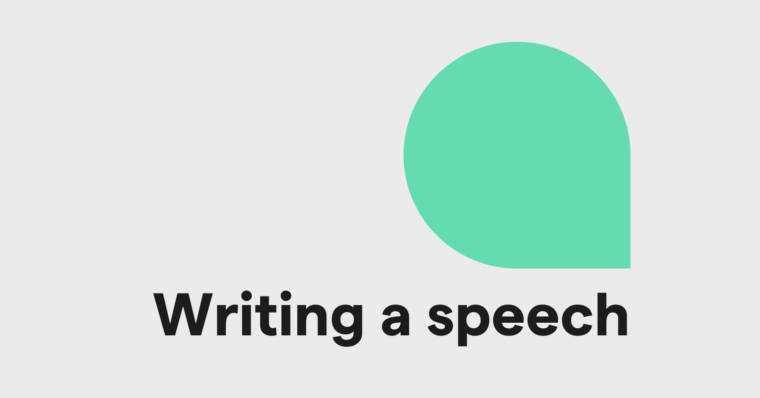
Key takeaways
- Thinking outside the box means questioning assumptions and exploring ideas from unconventional perspectives.
- Outside-the-box thinking helps you innovate, adapt, and write with originality.
- You can develop this mindset through specific techniques like constraint-based writing, idea remixing, and AI tools.
- Writers, students, and professionals benefit most when creativity becomes part of their daily process—not just a one-time exercise.
When you’re stuck on a blank page or reworking a project that feels flat, you’ve likely heard the advice “think outside the box.” But what does that actually mean?
In writing, creativity isn’t just about flair; it’s about seeing connections others miss. Thinking outside the box helps you find those connections by reframing problems, questioning common assumptions, and expressing ideas in riskier, more engaging ways.
This guide breaks down what it means to think creatively, why it matters, and 10 practical ways to develop this skill in your writing and work.
Table of contents
- What does “think outside the box” mean?
- Why is thinking outside the box important?
- How can thinking outside the box be challenging?
- How to think outside the box: 10 techniques
- Examples of outside-the-box thinking
- Best practices for thinking outside the box
- How Grammarly can help you think outside the box
- How to think outside the box FAQs
What does “think outside the box” mean?
To “think outside the box” means to approach a problem, an idea, or a piece of writing from an unconventional angle. It’s choosing a fresh perspective on the subject, often one that opposes or even contradicts standard assumptions. Keep in mind, though, that the goal of thinking outside the box isn’t to be contrarian; it’s to explore possibilities that aren’t immediately obvious.
“Thinking outside the box” originally referred to a puzzle-solving exercise that involved drawing lines outside a literal box of dots. Today, it communicates mental agility to challenge norms, ask better questions, and find creative solutions to academic, professional, and even intrapersonal and interpersonal challenges.
For writers, outside-the-box thinking looks like:
- Approaching familiar topics differently. This includes questioning conventional wisdom and trying to understand the topic from an unexpected angle.
- Breaking formulaic patterns. Structuring an essay or other type of writing in a fresh way can change how you and your readers engage with the writing’s subject.
- Engaging readers with originality. Experimenting with tone or storytelling style can create a unique twist on the topic, enhancing the reader’s understanding of it.
As you begin the writing process, try a variety of brainstorming methods before writing your first draft. This can make it easier to explore unique ideas before structure or self-criticism narrows your perspective on the subject.
Why is thinking outside the box important?
Outside-the-box thinking is the foundation of innovation and adaptability. In writing, it helps you generate new insights, find distinctive arguments, and engage audiences more deeply. Think about your favorite stories, poems, essays, and articles—they’re memorable because they’re original.
Here’s how thinking outside the box makes you a stronger writer:
- You become more creative. Creativity drives progress and innovation. Writers who challenge norms often discover original ideas or forms of expression.
- It’s easier to adapt. Thinking differently enables you to adapt to new contexts, such as a sudden change in assignment scope or new expectations from your audience.
- It makes you a better problem solver. Reframing a challenge can reveal unconventional but effective solutions.
- Originality keeps readers engaged. Audiences notice fresh ideas. A unique approach can make familiar subjects feel new again.
- You’ll build stronger arguments. The more you practice divergent thinking, the more easily you’ll connect unrelated concepts and spot patterns that others miss.
In the age of AI, outside-the-box thinking is more valuable than ever before. AI tools can generate ideas quickly, but human creativity is what makes those ideas meaningful. AI can provide structure and help you write faster, but originality makes your writing truly yours.
No large language model (LLM) can truly replace an authentic human voice, and your voice is completely unique to you. This is why it’s best to bring your personal touch to any AI-generated writing you produce.
How can thinking outside the box be challenging?
It’s not always easy to think outside the box, which can be frustrating when you’re advised to do so without any further instruction. That can make it easy to go back to old habits, producing writing that’s “safe.” But here’s the issue with safe writing—it’s usually not very engaging. When you’re having a hard time thinking outside the box, try identifying why it feels difficult. Common difficulties include:
- Cognitive bias and habit. Our brains prefer efficiency and familiarity, so we tend to repeat patterns that have worked before.
- Fear of failure or judgment. Many people hesitate to share unconventional ideas because they fear they’ll sound wrong or impractical.
- Cultural or institutional norms. Academic and professional settings often reward predictability and discourage risk-taking.
- Self-doubt. When an idea is unconventional, it can be easy to doubt its validity. This can make a writer question and dismiss their own ideas.
- A lack of examples. It can be very hard to think outside the box when you haven’t read much writing that does this. Working with commonly accepted sources keeps the same old ideas circulating, creating a closed loop of perspectives on a given topic.
Recognizing these challenges in your own brainstorming and writing is the first step to overcoming them. Once you see the forces keeping you “in the box,” you can start dismantling them and writing more original, more engaging content. To help you out, we’ve collected 10 tried-and-true techniques for thinking outside the box and producing outstanding writing. Read on, and next time you’re stuck, give one (or more!) a try.
How to think outside the box: 10 techniques
Thinking creatively isn’t a mysterious talent; it’s a skill you can learn and improve. These 10 techniques help you flip assumptions upside-down and make your writing process more flexible.
1. Reverse the prompt
Instead of answering a question directly, rewrite it from the opposite perspective. For example, if the prompt is “Why is collaboration important?,” instead ask, “When can collaboration slow progress?” Contrasting assumptions can lead to sharper insights.
Great for: Academic essays and persuasive writing
2. Use constraint-based writing
Creativity often thrives when you have to contend with limits. Try writing only in short sentences, avoiding adjectives, or setting a five-minute timer. Constraints force you to make bold choices and reveal what matters most.
Great for: Generating crisp, original prose
3. Remix an idea from another field
Borrow concepts from unrelated areas. A marketing student might apply architecture principles to structure an argument, or a business writer could borrow storytelling beats from film. This presents the subject in an unexpected way, sparking connections in readers’ minds.
Great for: Cross-disciplinary insight and analogies
4. Freewrite with a disruptive twist
Set a timer for five minutes and write without stopping, using a random prompt or image as a starting point. This pushes your brain out of autopilot and encourages unexpected associations.
Great for: Overcoming writer’s block or stale ideas
5. Ask: “What if this were fiction?”
Reimagine your topic as a story, metaphor, or alternate reality. This technique activates empathy and curiosity as you explore emotional or human dimensions behind your subject.
Great for: Essays, storytelling, and reflective writing
6. Talk it out with a peer or AI
Explaining your idea aloud helps you uncover assumptions and see weak spots. If no one’s available, use Grammarly’s writing assistant to refine your phrasing or expand on half-formed thoughts.
Great for: Testing clarity and developing ideas
7. Mind map divergent ideas
Start with your core topic at the center of a page, then branch out with 10 different directions or interpretations. Don’t judge the ideas; just explore them. Divergence is your goal.
Great for: Brainstorming new directions before outlining
8. Do a 10-idea sprint
Set a timer for 10 minutes and list 10 headlines, metaphors, or openings for your topic. The first few may be predictable, but the last ones will probably surprise you!
Great for: Warming up and pushing past safe ideas
9. Change the medium
Switch from typing to handwriting or use sticky notes instead of a document. Different medium modes engage different mental pathways, leading to fresh ideas in your writing.
Great for: Finding flow and new perspectives
10. Use Grammarly to generate new angles
Grammarly’s AI can help you explore unfamiliar directions by suggesting alternative tones, phrasing, or prompts. It’s helpful at every stage of the writing process, like providing feedback on how you can make your first draft more creative or tighten up your final draft’s closing before you hit post.
Great for: Drafting, revising, and discovering new creative angles
Examples of outside-the-box thinking
You’ve explored the how. Now, let’s look at what outside-the-box thinking looks like in real contexts.
Academic examples
- A literature student turns an essay about Hamlet into a graphic novel exploring internal conflict through visual metaphors. This can re-create the pathos felt when watching a live performance of Hamlet.
- A research group transforms its findings into a podcast episode, making academic insights more engaging for the public. This makes the ideas available to all listeners rather than limiting their range to academic circles.
- A wildlife research team studying whale migration creates an interactive digital map showing real-time locations of whale pods. A publicly accessible tool like this can show people just how far whales migrate and how many pods pass by their local shores.
Professional examples
- A marketing manager reimagines a product pitch, focusing on storytelling rather than data charts, to win the client’s attention. This makes the client feel like the marketer truly understands their brand and is alongside them on their journey.
- A hiring manager schedules five-minute interviews between the applicant and all existing team members to assess their potential to grow with the team. This provides a candid look at the applicant’s interpersonal style, aptitude, and cultural fit.
- A teacher designs lesson plans inspired by escape-room puzzles to boost classroom engagement. Lesson plans like this promote movement and critical thinking skills.
Creative examples
- A poet writes a collection composed entirely of public signage, revealing the accidental poetry of everyday language. Instead of casting the poet as an author, it positions them as a collector and curator.
- A short-story writer uses AI-generated character prompts to explore new ways of describing relationships between humans and algorithms. This holds up a mirror to our relationships with AI, revealing truths about ourselves.
- A composer incorporates branded sounds, like Netflix’s tudum, into an orchestral piece about life in 2025. An underlying theme is that these sounds, unexpected in an orchestral setting, compose our daily soundtrack and sometimes can feel inescapable.
These examples show that creative thinking isn’t limited to art; it’s a flexible skill that can transform how you write, plan, and communicate in every area of your life.
Best practices for thinking outside the box
Out-of-the-box thinking isn’t just about moments of inspiration. It’s a mindset built over time. Exercise your creative muscles by making these practices part of your regular writing routine:
Embrace curiosity
Curiosity drives exploration. As you research or draft, ask: “Why?” “What if?” “How else?” Writers who follow their curiosity often discover unexpected links and more engaging narratives.
Make space for play and experimentation
Creativity thrives when the stakes are low. Treat early drafts as experiments, not finished work. Giving yourself permission to fail often leads to your most original ideas.
Balance divergent and convergent thinking
Divergent thinking means generating as many ideas as possible. Convergent thinking means refining and structuring them. Both are essential. For instance, brainstorm 10 possible introductions (divergent), then choose one to polish (convergent).
Use the right creative tools
It’s easiest to think creatively when friction is low. Try:
- Whiteboards or sticky notes for mapping ideas
- Grammarly for rephrasing or testing alternate tones
- Prewriting exercises to clarify your goals before drafting
How Grammarly can help you think outside the box
Thinking outside the box is about more than coming up with new ideas; it’s about having the confidence and clarity to pursue them. Grammarly helps by providing the structure, prompts, and feedback you need to transform creative thinking into strong writing.
With Grammarly, you can:
- Brainstorm new directions using the AI brainstorming generator when you’re stuck.
- Reframe your tone or focus with personalized suggestions that help you test different approaches.
- Get outside perspectives through AI agents like Expert Review or Reader Reactions to see how your ideas land with others.
Grammarly helps refine your ideas, not replace them. Thinking outside the box is a uniquely human trait.
How to think outside the box FAQs
What does “think outside the box” mean?
It means approaching problems or ideas from unconventional angles, challenging assumptions, and exploring new solutions instead of defaulting to established ones.
Can anyone learn to think outside the box?
Yes. With practice and the right tools, anyone can learn to reframe challenges and generate original ideas.
Is thinking outside the box a skill or a mindset?
It’s both. Outside-the-box thinking is a skill you can strengthen through techniques like brainstorming and freewriting, and it’s a mindset rooted in curiosity and experimentation.
How does thinking outside the box apply to writing?
It helps writers approach topics creatively, avoid clichés, and connect ideas in unique ways that engage readers.






